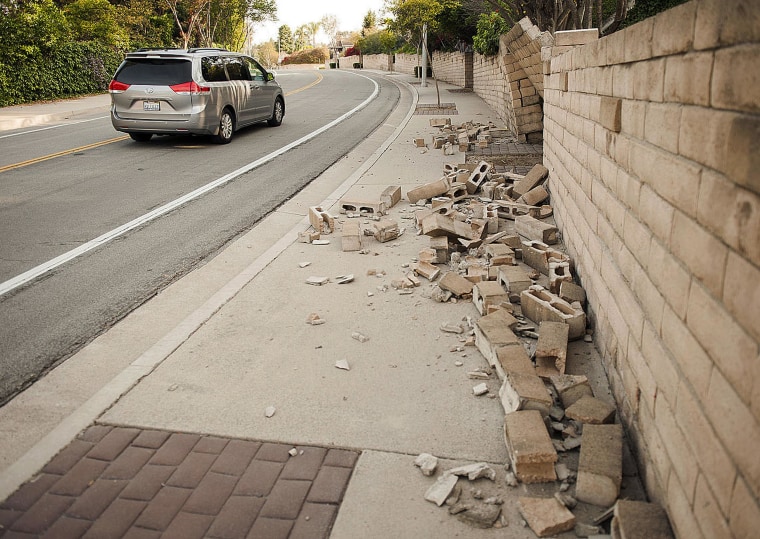This past week may have had more noticeable quakes in the U.S. than most, but seismologists have been quick to point out that the ground is nearly always rumbling somewhere. Earthquakes are likely to come one after another, but it doesn't mean we're any closer to "the big one."
The series of highly visible earthquakes around the country over the last few days made headlines as people wondered whether the trend would continue — perhaps with increasing magnitude. But U.S. Geological Survey seismologist Lucile Jones said that's not quite how it works.
"There's nothing about this that looks unusual," she said in a telephone interview Monday with NBC News. "We're probably making a pattern out of nothing."
"Plate tectonics hasn't stopped," she added — least of all in the Los Angeles area, which shoulders a quarter of the nation's earthquake risk and where a 5.1 earthquake that hit Friday night, followed by more than 100 aftershocks.

But what about the earthquakes in Oklahoma and Yellowstone National Park in Wyoming?
In Oklahoma, at least, the USGS is "quite convinced" that the quakes are "fracking-related," citing an increase in frequency following the introduction of the oil extraction technique and clustering of quakes around wells.
As for Yellowstone, we can't rule out simple coincidence. There are dozens of earthquakes every day throughout the country.
That doesn't mean it's all entirely random, though.
"The one pattern we do know is that one earthquake makes another earthquake more likely," explained Jones, "and when you have a higher rate, you have a higher probability of having them turn into a big one."
So it's not that smaller quakes are warning signs of a larger one, exactly. Instead, when you have lots of regional seismic activity, such as in the L.A. area in the 1980s, the chances of a temblor growing to a dangerous size increase. And after the tectonic pressure is relieved, things calm down — giving the impression that smaller quakes portend a big one.
Concluded Jones: "We'll have to see whether this is just a blip or whether we're going back to a higher frequency."